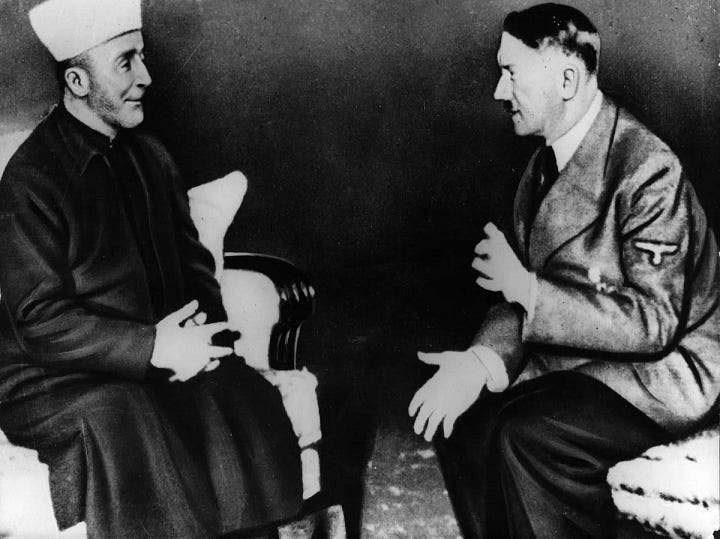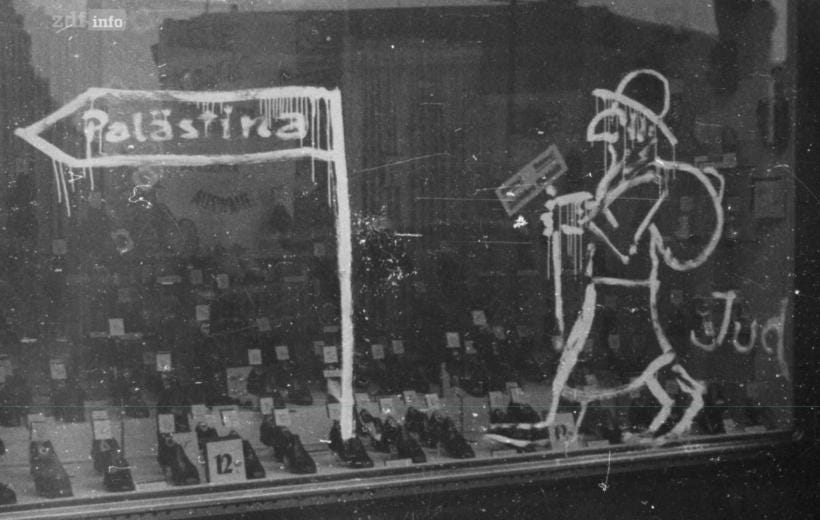British Mandatory Palestine 1918-1948
The image depicts the flag of Palestine during the British Mandate.
Who were the "Palestinians" at the beginning of the 20th century?
Jews had always been coming to Palestine, and by the end of the 19th century, their influx had increased. Partly due to the development of transportation and partly because of the rise of anti-Semitism. Prior to the British Mandate, in 1890, Arabs constituted 80% of the population. Over the next quarter of a century, an additional 50,000 Jews, 100,000 Arabs, and some Christians migrated into Palestine. By the start of the British Mandate, Arabs made up about 75% of the population, with the remaining 25% split between Jews and Christians (slightly more Jews than Christians).
At the beginning of the 20th century, Jews, mainly from Eastern Europe, continued to arrive in Palestine. There was a mass migration of Arabs as well, in particular, from Egypt and Syria, due to the extensive construction and economic growth facilitated by the British.
During the British Mandate, all inhabitants of Palestine – Jews, Christians, and Arabs – were referred to as "Palestinians". They all held Mandatory Palestine passports, including Golda Meir, for example. Alongside the name "Palestine" all documents and coins of that time featured the Hebrew abbreviation א״י, meaning Eretz Yisrael (the State of Israel). Outside of Palestine, the word "Palestinians" primarily referred to Jews. Nazi caricatures from the early 1930s depict a long-nosed Jew with the caption: "Jews, go to Palestine!"
The Palestinian Arabs at that time, on the other hand, preferred to identify as "Arabs".
Did Jews and Arabs live peacefully in Palestine before 1948?
This is a popular lie. No, they did not live peacefully. Arabs conducted regular raids on Jewish settlements, burning, raping and massacring Jews. The most well-known ones are the Jerusalem massacre in 1920, Jaffa riots in 1921, Hebron massacre in 1929, and the Arab (side note, “Arab”, not “Palestinian”) revolt of 1936-1939.
A popular variation of this myth suggests that Arabs welcomed Jewish refugees, fleeing the European pogroms, with open arms. This, too, is untrue. Firstly, Palestine was under British rule, and only the British were entitled to welcome or reject anyone. More importantly, starting from the end of the 19th and throughout the first half of the 20th century, Arabs vigorously opposed Jewish immigration. The Arab pressure on the British authorities led to strict limitations on legal Jewish immigration, which, on the verge and during World War II, nearly meant a death sentence.
It is important to note that Jews never forcibly took land from Arabs. Jews purchased land despite their poverty and all the legislative and extralegal restrictions. Jews primarily bought land in swampy areas infested with malaria-carrying mosquitoes; they planted eucalyptus trees, and reclaimed the marshes. Not a single square meter was acquired through force.
Arabs and nazism
Amin al-Husseini is an overlooked historical figure. In brief, since the early 20th century, he harbored a deep hatred for Jews, actively participated in the Jerusalem massacre of 1920, faced prosecution and fled to Syria, but was pardoned shortly after. He then took part in the massacre of Jews in 1929 and the revolts of 1936-1939. He was inspired by the Nazis and collaborated with them. After the start of World War II, he fled to Iraq, fought against the British, then traveled to Italy and later to Germany, where he met with Hitler and received financial support from him. Al-Husseini helped form an SS division, secured Hitler's promise to annihilate all Jews in Palestine, called for bombing Tel Aviv, and urged Arabs worldwide to engage in Jihad against Jews. His alliance with the Nazis lasted beyond the war years.


Amin al-Husseini was also the teacher, the mentor, and the inspiration for Yasser Arafat. Yes, the very same Arafat who later received the Nobel Peace Prize, more details to follow.
Jewish defense organizations
The key word is “defense”. All of them – Haganah, Etzel – emerged to protect the Jews in Mandatory Palestine from the raids of their bloodthirsty neighbors.
Later on, in the early 1940s, some of these organizations indeed carried out attacks and terror acts against the British administration. The most infamous and bloodiest was the bombing of the King David Hotel in Jerusalem. What led to this act was the British authorities arresting the Jewish defense organization members and confiscating their documents and weapons. The goal of the bombing was to destroy the confiscated documents kept at the hotel. Notably, a warning call was made to the hotel half an hour before the explosion in order to reduce the casualties (it proved ineffective as no one was evacuated).
And even so, Jewish organizations never aimed for the annihilation of the peaceful Arab population.
From these organizations later emerged the IDF – Israel Defense Forces. The key word is again – “defense”.
The difference in goal setting
Ernest Bevin, the British Foreign Secretary, who absolutely cannot be accused of sympathizing with Jews and/or Zionism, addressed the British Parliament on February 18, 1947 and recommended delegating the resolution of the Palestinian issue to the United Nations. "It's an unsolvable conflict, – he explained, – for the Jews the essential point of principle is the creation of a sovereign Jewish State. For the Arabs, the essential point of principle is to resist to the last the establishment of Jewish sovereignty in any part of Palestine".





